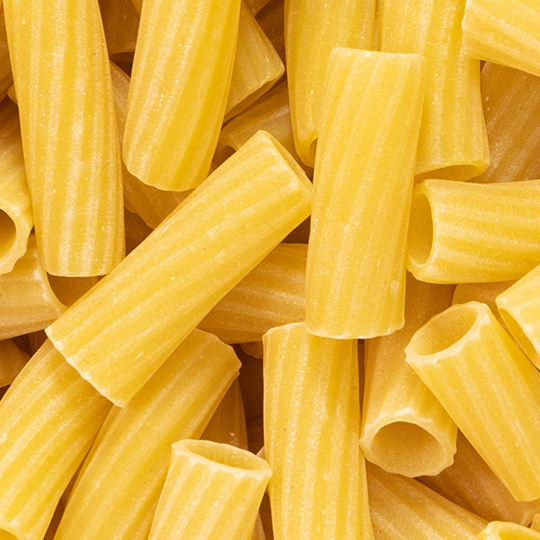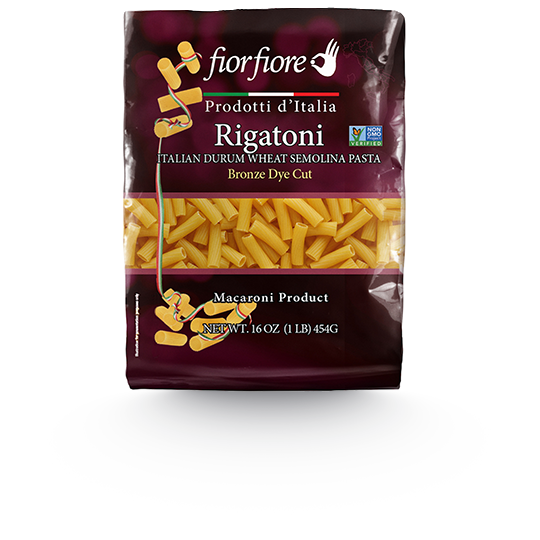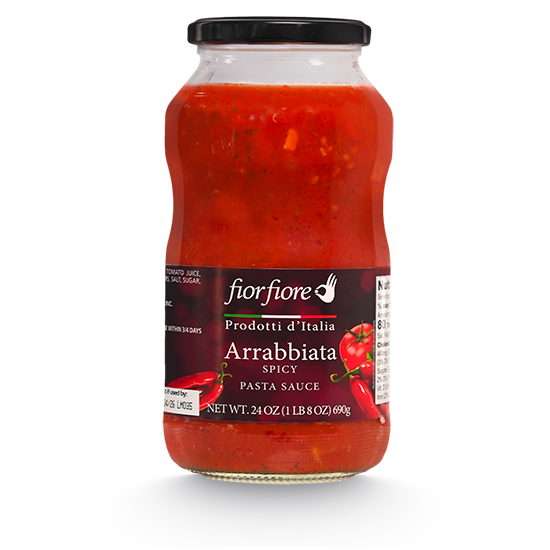


Rigatoni
Rigatoni are a form of cylindrical-shaped pasta marked with long ridges, often associated with cuisine of southern and central Italy. The ribbed surface holds sauce well inside and out, making this pasta a popular choice for dressing with grated cheese.
The True Taste of Italian Pasta
- NOT ALL PASTA IS CREATED EQUAL. While modern industrial pasta is shaped using Teflon dies for speed and efficiency, this creates a smooth surface that causes sauce to slip off, collecting at the bottom of your plate.
OUR PASTA, INSTEAD, IS MADE USING BRONZE-CUT DIES– a traditional method that creates a naturally rough, porous texture. This difference matters: sauces grip the pasta properly, enhancing flavor with every bite and offering a truly authentic eating experience.
BUT TEXTURE ISN’T THE ONLY SECRET. Unlike pasta dried quickly at high temperatures, our pasta undergoes a slow, low-temperature drying process, lasting up to 12 hours. This careful method preserves the wheat’s aroma, natural flavor, and nutritional value – something fast drying simply can’t achieve. - THE RESULT? A pasta that holds its shape, cooks to a perfect al dente texture in just 10 minutes, and elevates every meal with its genuine Italian character.

Ingredients
Durum Wheat Semolina, Water
Contains: Wheat.
May Contain: Egg and Soy.
Preparation
Bring 1 litre of water to a rapid boil. Add a pinch of salt. gradually add pasta to the boiling water. Stir gently and return to a rapid boil. Cook without a lid, stirring occasionally for the minutes indicated on the package or until reaching the desired degree of tenderness. Drain and season to taste.
Cooking time: 11 minutes.
| Nutrition Facts | Per 2/3 package (56g) | %Daily Value* | Read more | |
|---|---|---|---|---|
| Calories | 200 | |||
| Fat | 1g | 1% | ||
| Saturated | 0g | 0% | ||
| Trans | 0g | |||
| Total Carbohydrate | 42g | 15% | ||
| Fiber | 2g | 7% | ||
| Sugars | 2g | |||
| Protein | 7g | |||
| Cholesterol | 0mg | |||
| Sodium | 0mg | 0% | ||
| Potassium | 130mg | 2% | ||
| Calcium | 10mg | 0% | ||
| Iron | 0.6mg | 4% | ||
| Vitamin D | 0mcg | 0% |
*5% or less is a little, 15% or more is a lot.
Recipes

The importance of pasta in Italy
Italy is the only country where pasta serves as the foundation of the national cuisine.
The multiple types, and the variety of flours used, illustrate both the central role this food plays in the Italian diet and each region’s ability to differentiate and identify itself through the varieties of pasta it produces.
Historians continue to debate pasta’s origin across the Italian peninsula. Some say Marco Polo brought it from Asia, others claim that the Etruscans came up with the recipe as a means to preserve the flour. Its nutritional value and long shelf life made it a versatile product for trading in the Mediterranean throughout the Middle Ages, and a staple in many households for centuries. Italians often say, “it is not a meal without pasta”.
Wheat field in Tuscany.
Submit your review | |



 FiorFiore USA
FiorFiore USA